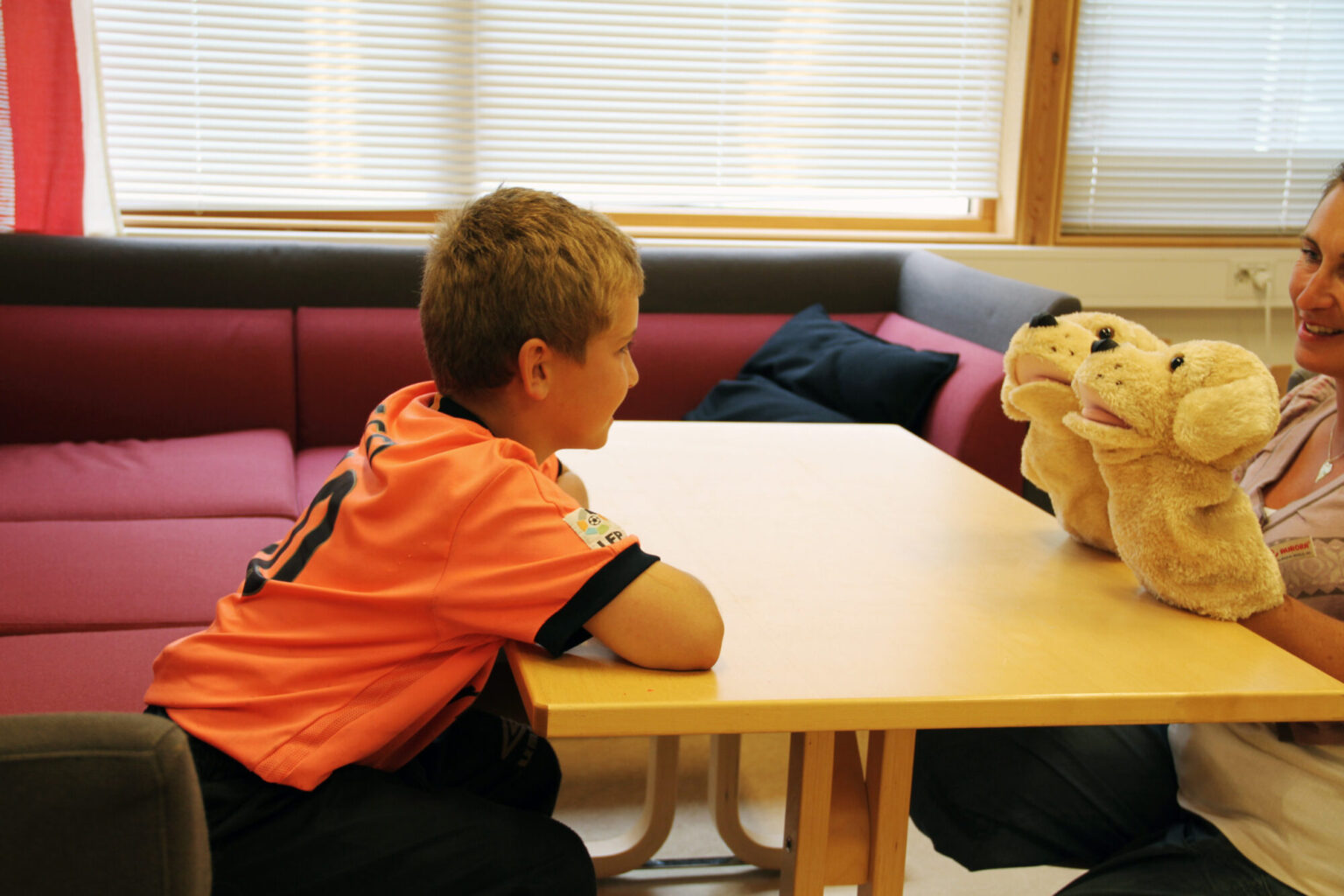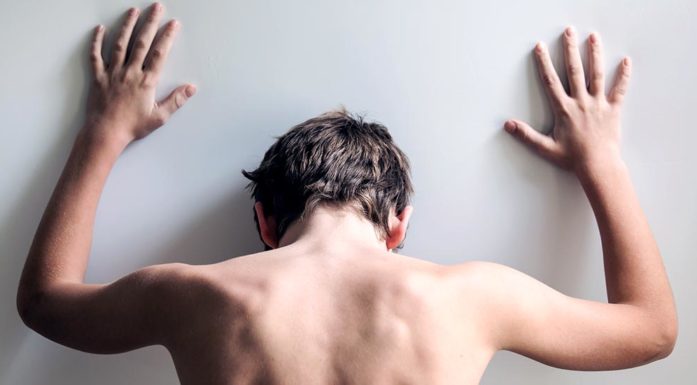Stressed parents increase the risk of self-harming in adolescents
One in ten Norwegian adolescents has engaged in deliberate self-harm without intending to commit suicide.
The short version
- New research from NTNU shows that the risk of self-harm among adolescents increases if children experience yelling, negativity, or hostility from their parents from an early age.
- There are five times as many girls who self-harm compared to boys. In most cases, parents are unaware that their children are engaging in self-harm.
- The researchers emphasize the importance of parents becoming aware early on of their own stress and negativity, and how this affects the child and their relationship with the child.
For the first time, researchers have taken an in-depth look at the correlation between stressed parents and self-harming in adolescents.
“The most common form of self-harming is cutting,” said Lars Wichstrøm, professor of psychology at NTNU.
In collaboration with Tove Wichstrøm, an associate professor at NTNU and specialist psychiatric nurse, Wichstrøm has just published a new study on self-harming.
The study shows that the risk of adolescents self-harming increases if they experience their parents yelling or being negative or hostile toward them from an early age.
Self-harming means intentionally harming oneself without the intent to commit suicide.
Cutting, head-banging and branding
The study also shows that there are five times as many girls who self-harm compared to boys. In most cases, parents are unaware that their children are self-harming.
Self-harming in the form of cutting can involve scratching oneself with a sharp object or cutting the skin with a knife.
“Head-banging is also a form of self-harming,” Wichstrøm said.
This involves hitting one’s head against something like a table. Another common form of self-harming is branding oneself with a cigarette or a candle flame.
“Self-harming is an attempt to cope with an unbearable situation. Enduring physical pain feels more manageable than emotional pain. Self-harming is a sign of deep despair,” said Tove Wichstrøm.

If you discover that the teenager in your home is self-harming, it’s important not to get angry or scold them, but rather to be curious and open-minded about what is causing him or her to feel so bad,” says Tove Wichstrøm, a university lecturer at NTNU and psychiatric nurse specialist. Photo: Anne Sliper Midling/NTNU
Interviewed with hand puppets
In the study, the researchers followed 759 children from the age of four to adolescence. When the children were six years old, they were asked how they perceived their interaction with their parents.
A method developed at the University of California, Berkeley was used to interview children at this young age. The interviewer uses hand puppets to act out different situations that the child may or may not relate to.
One puppet might say, “My mum is often angry with me,” while the other says, “My mum is almost never angry with me, what about your mum?” or “My dad yells at me when he is angry,” and the other says, “My dad does not yell at me when he is angry. What about your dad?”. During the interviews, the children were asked about a number of these types of situations, and the responses were scored based on how much the children agreed with one puppet or the other.

Researchers used a method developed at the University of California, Berkeley, to interview six-year-old children. The interviewer uses hand puppets to act out various situations that the child may or may not relate to. Photo: University of California.
The same children were interviewed using another, more age-appropriate interview method when they were 12, 14 and 16 years old.
The study shows that one in ten teenagers had engaged in deliberate self-harm without intending to commit suicide, while three per cent had such persistent and frequent self-harming that it met the criteria for self-harm disorder.
The parents were also interviewed when the children were six years old and when they reached adolescence.
Parental stress
“We do not know if something specific happened when the children were six years old, or if what the children described in the interview reflects a pattern of interaction that has continued over time,” Tove Wichstrøm said.
The researchers found that children who described their parents as negative and hostile had an increased risk of engaging in self-harm during adolescence.
“It is important to remember that this is the children’s perception of their parents, and not necessarily what actually happened,” said Lars Wichstrøm.
The researchers also found that children whose parents reported stress in their parenting role had an increased risk of engaging in self-harm during adolescence.
The study did not investigate general stress among the parents, but stress specifically related to the parenting role.
“It may involve stress related to lack of time, many new responsibilities, the child’s needs affecting the parents’ relationship, the child not validating the person as a parent, or difficulties in establishing a good connection with the child. Some parents also find tidying up toys or dealing with other practical tasks stressful,” added Lars Wichstrøm.
- You might also like: Mental stress plagues 44 per cent of teenage girls in Norway
New phenomenon
Both researchers highlight the importance of parents becoming aware of their own stress and negativity at an early stage, and how this affects the child and the parent–child relationship.
“As an adult, you naturally become more distant when you are caught up in your own stress, and it is harder to understand and respond to other people when you are agitated or tired. If you notice that your child is self-harming, it is important not to get angry or yell, but rather to be curious and inquisitive about what is causing them to feel so distressed,” Tove Wichstrøm said.

One in ten Norwegian adolescents engages in self-harm, with cutting being the most common form. Cutting can involve scratching the skin or using something like a razor blade to make deeper cuts. Photo: NTB Scanpix
Lars Wichstrøm believes that self-harming as a solution to emotional pain is a relatively new phenomenon, and that it is something adolescents learn from each other through platforms like social media or blogs. A study from the University of Oslo shows that self-harming among young people increased from four per cent in 2002 to 16 per cent in 2017.
“I’m fairly sure that it did not exist many decades ago. Back then, people did not think cutting yourself was something that could relieve difficult emotions. Before self-harming was described online or in popular culture, it was not necessarily something people would think of doing,” said Wichstrøm.
He believes it is important for adults to tell adolescents who are struggling that the pain can be managed by talking to someone, taking a step back from what is difficult and learning how to regulate their emotions in different ways.
References:
Wichstrøm T, Wichstrøm L. Childhood Predictors of Nonsuicidal Self-Injury in Adolescence: A Birth Cohort Study. J Am Acad Child Adolesc Psychiatry. 2024 Nov; 63(11):1114-1122. doi: 10.1016/j.jaac.2023.12.013. Epub 2024 Feb 27. PMID: 38423281.
Anita J Tørmoen, Martin Myhre, Fredrik A Walby, Berit Grøholt, Ingeborg Rossow, Change in prevalence of self-harm from 2002 to 2018 among Norwegian adolescents, European Journal of Public Health, Volume 30, Issue 4, August 2020, Pages 688–692,https://doi.org/10.1093/eurpub/ckaa042





